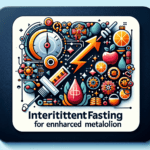So you’re looking to shed a few pounds and have heard about fasting diets as a possible solution. Well, you’re in luck! In this article, we’ll explore some of the most effective fasting diets for weight loss. Whether you’re new to fasting or have tried it before, we’ve got you covered with a variety of approaches that can help you achieve your goals. From intermittent fasting to alternate-day fasting, we’ll break down the benefits and potential drawbacks of each method. So sit back, relax, and get ready to discover the fasting diet that could be the key to reaching your weight loss objectives.

1. Intermitting Fasting
Different Types of Intermittent Fasting
Intermittent fasting has gained popularity as an effective approach to weight loss and improved overall health. There are several different types of intermittent fasting, each with its own unique protocol. The most common types include:
16/8 Method: This fasting method involves restricting your eating window to 8 hours a day and fasting for the remaining 16 hours. For example, you may choose to skip breakfast and have your first meal at noon, followed by your last meal at 8 pm.
5:2 Diet: With this approach, you eat normally for 5 days of the week and limit your calorie intake to 500-600 calories for the remaining 2 days. These fasting days are not consecutive and should be spaced throughout the week.
OMAD (One Meal a Day): As the name suggests, OMAD involves fasting for 23 hours a day and consuming all your calories within a single meal. This method requires discipline and careful planning to ensure adequate nutrition.
ADF (Alternate-Day Fasting): ADF involves alternating fasting days with days of normal eating. On fasting days, calorie intake is greatly reduced or completely eliminated, while on non-fasting days, you eat normally.
Benefits of Intermittent Fasting
Intermittent fasting offers numerous benefits beyond weight loss. Not only does it help with shedding excess pounds, but it also promotes cellular repair, improves insulin sensitivity, increases growth hormone levels, and boosts brain function. Some additional benefits include:
Simplicity: Intermittent fasting is relatively easy to incorporate into your lifestyle since it doesn’t require specific meal plans or complicated calorie counting. It focuses more on when to eat, rather than what to eat.
Increased Fat Burning: By fasting, your body is forced to use stored fat for energy, leading to increased fat burning and weight loss. Additionally, intermittent fasting can help target stubborn belly fat.
Improved Metabolic Health: Intermittent fasting has been shown to improve various metabolic markers, such as blood sugar levels, cholesterol profiles, and blood pressure. This can have a positive impact on overall health and reduce the risk of chronic diseases.
Sustainable and Flexible: Unlike traditional diets, intermittent fasting can be sustained in the long term. It allows for flexibility in meal timing and can be adapted to fit different lifestyles and schedules.
Effective Implementation of Intermittent Fasting
To successfully implement intermittent fasting, it’s important to ease into it gradually and choose a fasting method that suits your lifestyle and preferences. Here are some effective strategies to consider:
Start Slow: Begin by extending your overnight fasting period. For example, if you typically eat breakfast at 8 am, try pushing it to 10 am. Gradually increase the fasting window until you reach your desired method.
Stay Hydrated: During fasting periods, it’s essential to stay hydrated by drinking water, herbal tea, or black coffee. This helps curb hunger and keeps your body hydrated.
Monitor Food Intake: While intermittent fasting doesn’t require calorie counting, it’s still important to make healthy food choices. Focus on whole, unprocessed foods and include plenty of fruits, vegetables, lean proteins, and healthy fats in your eating window.
Listen to Your Body: Pay attention to your body’s hunger and fullness cues. Intermittent fasting should not be used as an excuse to overeat during your eating window. Eat until you’re satisfied, but avoid excessive calorie consumption.
2. Water Fasting
Understanding Water Fasting
Water fasting is a more intense form of fasting where you consume only water for a specified period of time. This means abstaining from all foods, beverages, and even supplements. Water fasting is typically done for a shorter duration, ranging from a few days to a maximum of 30 days.
Health Benefits of Water Fasting
Water fasting offers several potential health benefits, including:
Detoxification: Water fasting gives your digestive system a break, allowing your body to focus on detoxification and eliminating toxins. It promotes autophagy, the natural process of cellular cleansing and repair.
Weight Loss: Water fasting can lead to rapid weight loss as your body taps into stored fat for energy. It can also help jumpstart a healthier relationship with food and break unhealthy eating patterns.
Improved Insulin Sensitivity: Water fasting has been shown to improve insulin sensitivity, which can help regulate blood sugar levels and reduce the risk of type 2 diabetes.
Mental Clarity: Many people report increased mental clarity, focus, and improved cognitive function during water fasting. It may also have positive effects on mood and emotional well-being.
Effective Techniques for Water Fasting
Water fasting should be approached with caution and under the guidance of a healthcare professional. Here are some important tips to follow:
Preparation: Before starting a water fast, it’s crucial to prepare your body by gradually reducing your food intake and transitioning to a whole-food, plant-based diet. This helps minimize potential detox symptoms.
Hydration: During a water fast, staying hydrated is essential. Aim to drink at least 2-3 liters of water per day, and consider incorporating herbal teas or electrolyte-enhanced water for added hydration.
Rest and Relaxation: While fasting, it’s important to prioritize rest and engage in gentle activities like walks, meditation, or yoga. Avoid strenuous exercise, as your body is in a lower-energy state.
Breaking the Fast: When breaking a water fast, start by introducing small amounts of easily digestible foods, such as fruits and vegetables. Gradually reintroduce solid foods over a few days to allow your digestive system to adjust.
3. Juice Fasting
Exploring Juice Fasting
Juice fasting involves consuming only fresh fruit and vegetable juices for a specific period of time. The juices are usually extracted using a juicer or blender, which removes the fiber and leaves behind the liquid essence of the plants.
Nutritional Benefits of Juice Fasting
Juice fasting provides a concentrated source of vitamins, minerals, enzymes, and antioxidants from fruits and vegetables. Some potential nutritional benefits include:
Nutrient Absorption: Juices can be easily absorbed by the body, providing essential nutrients in a highly bioavailable form. This can help support overall health and boost the immune system.
Hydration: Juices have high water content, which helps keep you hydrated during the fasting period. Proper hydration is essential for various bodily functions and overall well-being.
Gut Rest and Renewal: Juice fasting gives your digestive system a break from solid foods, allowing it to rest and repair. This can improve digestion and promote a healthier gut microbiome.
Alkalizing Properties: Many fruits and vegetables used in juice fasting have alkalizing properties, which can help balance the body’s pH levels and reduce inflammation.
Choosing the Right Juices for Fasting
When juice fasting, it’s important to choose a variety of fruits and vegetables to ensure a balanced nutrient intake. Here are some guidelines to consider:
Vegetable Juices: Include a variety of dark leafy greens like kale, spinach, and Swiss chard. These are rich in vitamins, minerals, and antioxidants. Add celery, cucumber, and parsley for additional nutrients.
Fruit Juices: Opt for low sugar fruits like berries and citrus fruits. Apples and pears can also be added for natural sweetness. Avoid juicing fruits with high sugar content, as it can lead to blood sugar imbalances.
Dilute and Mix: Dilute your juices with water or herbal teas to reduce the overall sugar content. It’s also beneficial to rotate the types of juices you consume each day to maximize nutrient diversity.
Quality Matters: Use organic, pesticide-free fruits and vegetables whenever possible to avoid introducing toxins into your system. Freshly made juices are preferred over store-bought options, as they contain more nutrients.

4. Alternate-Day Fasting
Understanding Alternate-Day Fasting
Alternate-day fasting involves alternating between normal eating days and fasting days throughout the week. On fasting days, calorie intake is either greatly reduced or completely eliminated. This approach allows for regular eating patterns on non-fasting days.
Health Advantages of Alternate-Day Fasting
Alternate-day fasting offers several potential health advantages, including:
Weight Loss: By reducing overall calorie intake, alternate-day fasting can promote weight loss and help maintain a healthy body weight in the long term. It creates a caloric deficit that supports fat burning.
Improved Heart Health: Alternate-day fasting has been associated with improved heart health markers, such as reduced blood pressure, total cholesterol, and triglyceride levels. This can lower the risk of cardiovascular diseases.
Enhanced Insulin Sensitivity: Alternate-day fasting can improve insulin sensitivity and help regulate blood sugar levels. This is particularly beneficial for individuals with insulin resistance or prediabetes.
Simplicity: Compared to other fasting methods, alternate-day fasting can be relatively simple to follow, as it has clear guidelines for fasting days and non-fasting days. This makes it easier to adhere to in the long run.
Tips for Effective Alternate-Day Fasting
To make alternate-day fasting more sustainable and effective, consider the following tips:
Gradual Transition: Start by gradually reducing your calorie intake on fasting days rather than jumping into a full fasting day right away. This allows your body to adjust more easily.
Meal Planning: Plan your meals ahead on non-fasting days to ensure you meet your nutritional needs while staying within your calorie limits. Focus on whole, unprocessed foods and include a balance of protein, healthy fats, and carbohydrates.
Stay Hydrated: During fasting days, hydration is essential. Drink plenty of water, herbal tea, or other calorie-free beverages to stay hydrated and curb hunger pangs.
Be Flexible: If alternate-day fasting feels too restrictive, consider modifying the approach to fit your lifestyle. For example, you may choose to fast every other day or limit fasting to a specific time window each day.
5. Modified Fasting
Exploring Modified Fasting
Modified fasting involves altering your food intake on certain days or during specific time frames while maintaining a more flexible approach on other days. Unlike strict fasting, modified fasting allows for some calorie consumption during fasting periods.
Benefits of Modified Fasting
Modified fasting offers several benefits, making it a popular choice among individuals looking for a more flexible fasting approach. Some advantages include:
Improved Adherence: Modified fasting is generally easier to sustain in the long term compared to strict fasting methods. The flexibility allows for a greater variety of food choices, making it more manageable for many individuals.
Weight Loss: By reducing overall calorie intake, modified fasting can contribute to weight loss. It creates a calorie deficit while still providing some food intake, making it a more sustainable option for some people.
Enhanced Autophagy: Modified fasting can still encourage autophagy, the cellular self-cleaning process, while providing some nutrient intake. This can promote cellular repair and rejuvenation.
Supports Metabolic Health: Modified fasting has been shown to improve various metabolic markers, including insulin sensitivity, blood glucose control, and lipid profiles. This can have a positive impact on overall metabolic health.
Different Approaches to Modified Fasting
There are different approaches to modified fasting, and you can choose the one that best fits your lifestyle and goals. Here are a few popular methods:
Time-Restricted Eating: This approach involves restricting the time window in which you eat each day, such as the 16/8 method mentioned earlier. By compressing your eating window, you allow for longer periods of fasting.
Caloric Restriction: With this method, you consume a reduced calorie intake on specific days of the week, alternating with normal calorie intake on other days. This can be done by eating smaller meals or incorporating meal replacement options.
Allowance for Specific Foods: Some modified fasting methods allow for consumption of specific foods during fasting periods, such as bone broth, small amounts of healthy fats, or low-calorie beverages. This adds variety and can help manage hunger.
Fast Mimicking Diet: The fast mimicking diet involves a modified fasting approach where you eat a specific low-calorie meal plan for a set number of days each month. This method provides some food intake while still mimicking the effects of fasting.
6. The 16/8 Method
Understanding the 16/8 Method
The 16/8 method is a popular type of intermittent fasting that involves fasting for 16 hours daily and limiting your eating window to 8 hours. This method can be adapted to fit different lifestyles and eating preferences.
Health Benefits of the 16/8 Method
The 16/8 method offers several health benefits, making it an attractive option for many individuals. Some advantages include:
Weight Loss: By reducing the number of hours you spend eating each day, the 16/8 method creates a calorie deficit, which can lead to weight loss and fat burning. It also targets stubborn belly fat.
Simplicity and Flexibility: The 16/8 method is relatively simple to follow, as it doesn’t require specific meal plans or calorie counting. You can choose the eating window that suits your lifestyle, such as skipping breakfast and having a late lunch.
Improved Insulin Sensitivity: By reducing the frequency of meals, the 16/8 method can improve insulin sensitivity and regulate blood sugar levels. This can lower the risk of type 2 diabetes and metabolic syndrome.
Enhanced Cellular Repair: The 16/8 method promotes autophagy, which is the body’s natural process of cellular repair and renewal. This can have positive effects on overall cellular health and may contribute to longevity.
Tips for Successful Application of the 16/8 Method
To successfully apply the 16/8 method, consider the following tips:
Choose the Right Eating Window: Select an 8-hour eating window that works best for your schedule and preferences. For example, you might choose to eat between 12 pm and 8 pm, skipping breakfast and ending your day with an early dinner.
Stay Hydrated: During the fasting period, remember to drink plenty of water, herbal tea, or black coffee to stay hydrated and curb hunger. Avoid adding sugar or cream to these beverages, as it can break the fast.
Focus on Nutrient-Dense Foods: During your eating window, prioritize nutrient-dense foods like fruits, vegetables, whole grains, lean proteins, and healthy fats. This ensures you meet your nutritional needs and supports overall health.
Listen to Your Body: Pay attention to your body’s hunger and fullness cues. The 16/8 method should not be used as an excuse to overeat during your eating window. Eat until you’re satisfied, but avoid excessive calorie consumption.
7. The 5:2 Diet
Exploring the 5:2 Diet
The 5:2 diet is a form of intermittent fasting that involves eating normally for 5 days of the week and restricting calorie intake to 500-600 calories for the remaining 2 days. These fasting days can be non-consecutive and spread throughout the week.
Benefits of the 5:2 Diet
The 5:2 diet offers several benefits that make it popular among those looking for a flexible approach to fasting. Some advantages include:
Weight Loss: By reducing overall calorie intake on fasting days, the 5:2 diet creates a calorie deficit, leading to weight loss. It can also help with breaking through weight loss plateaus.
Sustainability: The 5:2 diet is relatively easy to sustain in the long term since it allows for regular eating patterns on non-fasting days. The flexibility to choose fasting days makes it more adaptable to individual schedules.
Improved Insulin Sensitivity: The 5:2 diet has been shown to improve insulin sensitivity, which can help regulate blood sugar levels and reduce the risk of type 2 diabetes.
Enhanced Longevity: Studies suggest that intermittent fasting, such as the 5:2 diet, may have anti-aging effects and promote longevity. It activates cellular repair mechanisms and may protect against age-related diseases.
Effective Strategies for the 5:2 Diet
To maximize the effectiveness and sustainability of the 5:2 diet, consider the following strategies:
Plan Your Fasting Days: Choose which days of the week you’ll designate as fasting days, preferably not back-to-back. Consider your schedule and any special events or occasions that may make fasting challenging.
Opt for Nutrient-Dense Foods: On fasting days, focus on consuming nutrient-dense foods to ensure you’re getting the necessary vitamins and minerals while keeping calorie intake low. Choose lean proteins, vegetables, and fiber-rich foods.
Stay Hydrated: On fasting days, it’s important to stay hydrated. Drink plenty of water, herbal tea, or other calorie-free beverages throughout the day to help curb hunger and maintain hydration.
Be Mindful on Non-Fasting Days: While you have more flexibility on non-fasting days, it’s still important to make healthy food choices. Opt for whole, unprocessed foods, and practice portion control to maintain a balanced calorie intake.
8. OMAD (One Meal a Day)
Understanding OMAD
OMAD, short for One Meal a Day, is a form of intermittent fasting where you restrict your eating to a specific 1-hour window each day. This means consuming all your calories for the day within that one meal, typically in the evening.
Health Benefits of OMAD
OMAD offers unique health benefits, making it a popular fasting approach for some individuals. These benefits include:
Simplicity and Convenience: OMAD is one of the simplest forms of fasting, as it eliminates the need for meal planning and preparation throughout the day. It also fits well with busy lifestyles and can save time.
Weight Loss: By reducing the number of calories consumed in a day, OMAD creates a significant calorie deficit, leading to weight loss. Consuming all your calories within a short time frame can also improve insulin sensitivity and fat burning.
Focus and Mental Clarity: Many people report increased mental clarity and focus during fasting periods. OMAD enhances cognitive performance and helps regulate hunger hormones, leading to better concentration.
Potential Autophagy Activation: OMAD can potentially stimulate autophagy, the cellular self-cleaning process. During the fasting period, the body can undergo repair and rejuvenation at a cellular level.
Effective Tips for OMAD
To make OMAD more successful and enjoyable, consider the following tips:
Ease into OMAD: If you’re new to OMAD, start by gradually increasing your fasting window. Begin with a 12-hour fast and slowly extend it over time until you reach a 23-hour fasting window with a 1-hour eating window.
Plan Balanced Meals: Since you have only one meal to consume all your calories and nutrients, it’s important to plan a balanced meal. Include a variety of whole foods, such as lean proteins, healthy fats, complex carbohydrates, and plenty of vegetables.
Stay Hydrated: During the fasting period, it’s crucial to maintain proper hydration. Drink plenty of water throughout the day to support overall health and curb hunger.
Be Mindful of Hunger Cues: While it’s normal to feel hungry during the fasting period, pay attention to your body’s hunger cues. Make sure you’re consuming enough calories and nutrients to support your energy needs and overall health.
9. ADF (Alternate-Day Fasting)
Exploring ADF
Alternate-Day Fasting (ADF) is a fasting approach that involves alternating fasting days with days of normal eating. On fasting days, calorie intake is greatly reduced or completely eliminated, while on non-fasting days, you eat normally.
Benefits of ADF
ADF offers several benefits that contribute to overall health and weight management. Some advantages include:
Weight Loss: By reducing overall calorie intake on fasting days, ADF promotes weight loss. The regular calorie deficit created by alternating fasting and non-fasting days can lead to sustainable weight loss over time.
Improved Insulin Sensitivity: ADF has been shown to improve insulin sensitivity and regulate blood sugar levels. This can have long-term benefits for individuals with insulin resistance or prediabetes.
Increased Fat Burning: During fasting days, the body is forced to use stored fat for energy, leading to increased fat burning and weight loss. This can help break through weight loss plateaus and target visceral fat.
Simplicity and Flexibility: ADF is relatively simple to follow as it doesn’t require specific meal plans or calorie counting. It offers flexibility by allowing regular eating on non-fasting days, making it easier to adhere to in the long run.
Implementing ADF Effectively
To implement ADF effectively, consider the following tips:
Start Slow: If you’re new to ADF, start by gradually reducing your calorie intake on fasting days rather than jumping into complete fasting right away. Begin by restricting calorie intake to 500-600 calories and gradually decrease it from there.
Plan Non-Fasting and Fasting Days: Plan your meals in advance for both non-fasting and fasting days. On non-fasting days, focus on consuming a balanced diet that meets your calorie and nutrient needs. On fasting days, ensure you have adequate low-calorie options to sustain you.
Stay Hydrated: On fasting days, it’s important to stay hydrated by drinking water, herbal tea, or black coffee. Hydration can help curb hunger pangs and support overall health.
Listen to Your Body: Pay attention to your body’s hunger and fullness cues. On fasting days, it’s normal to feel some hunger, but avoid excessive calorie restriction that may lead to nutrient deficiencies or unsustainable eating habits.
10. Combination Fasting Approaches
Understanding Combination Fasting
Combination fasting involves incorporating different fasting approaches into a flexible schedule. This allows you to tailor your fasting routine to your lifestyle and goals. For example, you may combine the 16/8 method with the 5:2 diet or alternate between OMAD and ADF.
Benefits of Combination Fasting
Combining different fasting approaches can offer several benefits, including:
Greater Flexibility: Combination fasting allows you to adapt your fasting routine to suit your lifestyle and preferences. It provides flexibility in terms of meal timing, calorie intake, and fasting duration.
Enhanced Weight Loss: By employing different fasting methods, you can create a more significant calorie deficit and promote weight loss. The combination of different approaches keeps your body guessing, preventing plateaus.
Maximized Health Benefits: Each fasting approach has unique health benefits, and combining them can help maximize the overall impact on your health. The combination allows for a more comprehensive approach to wellness.
Sustainability and Variety: Combination fasting adds variety to your fasting routine, preventing monotony and making it easier to sustain in the long term. The flexibility to switch between methods keeps you engaged and motivated.
Implementing Combination Fasting for Effective Weight Loss
To implement combination fasting effectively and achieve weight loss goals, consider the following strategies:
Plan and Schedule: Create a fasting schedule that combines different fasting methods, considering your personal preferences and lifestyle. Plan fasting days, non-fasting days, and focus on consistency.
Monitor Calorie Intake: Pay attention to your calorie intake on both fasting and non-fasting days. Ensure that the total calorie intake aligns with your weight loss goals while still meeting your nutritional needs.
Stay Hydrated: Hydration is essential during fasting periods. Make sure to drink plenty of water, herbal tea, or other calorie-free beverages throughout the day to stay hydrated and curb hunger.
Listen to Your Body: Listen to your body’s hunger and fullness cues, and adjust your eating habits accordingly. It’s important to focus on nourishing your body with nutrient-dense foods while avoiding excessive calorie consumption.
In conclusion, there are multiple effective fasting diets available for weight loss and improved health. Each type of fasting has its own unique benefits and considerations. Whether you choose intermittent fasting, water fasting, juice fasting, alternate-day fasting, modified fasting, OMAD, ADF, the 5:2 diet, the 16/8 method, or combination fasting, it’s important to select an approach that suits your lifestyle, preferences, and health goals. Remember to prioritize proper nutrition, hydration, and listen to your body’s cues throughout your fasting journey. With the right strategies and guidance, fasting can be a safe and effective tool for achieving your weight loss goals and improving your overall well-being.








